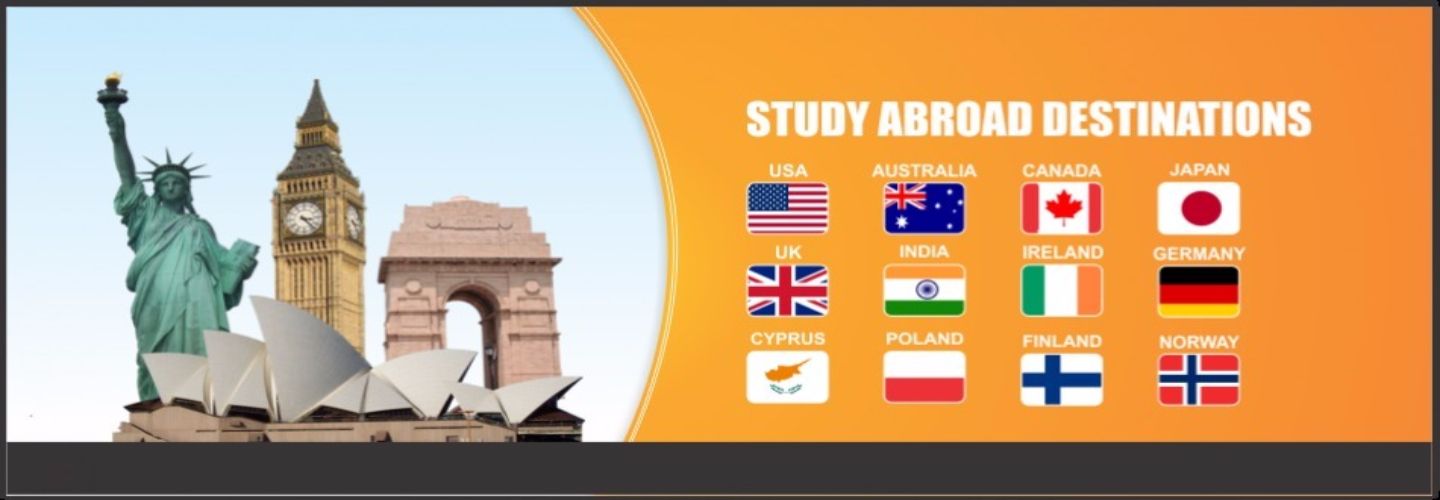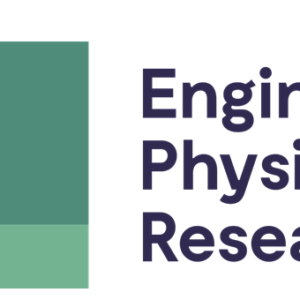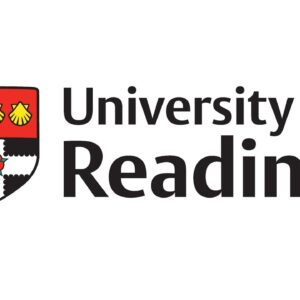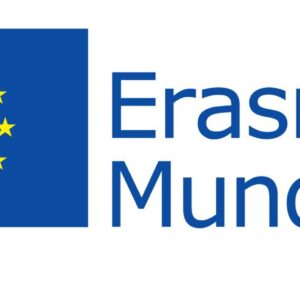Top 20 Study Abroad Destinations 2025
As the global landscape of education evolves, students worldwide are increasingly exploring international study opportunities to enhance their academic and professional prospects. Studying abroad is more than just gaining a degree; it’s about experiencing diverse cultures, building a global network, and boosting career trajectories. In 2025, the focus remains on identifying destinations that offer a strong return on investment (ROI), robust education systems, and career opportunities. This comprehensive guide delves into the top 20 study abroad destinations, analyzing costs, visa processes, scholarships, and work opportunities.

The criteria for selecting these destinations include education quality, affordability, post-graduation employment opportunities, and visa success rates. Moreover, the guide considers global university rankings, student reviews, and expert insights to provide actionable advice for prospective international students. Each country’s unique offerings, including cultural experiences, job markets, and settlement pathways, are highlighted, making this a one-stop resource for your study abroad journey.
Key Global Trends:
- STEM Dominance: Increased demand for programs in science, technology, engineering, and mathematics.
- Scholarship Growth: Rising availability of scholarships and financial aid for international students.
- Work-Study Opportunities: More countries offering part-time work rights and post-graduation work permits.
- Online Integration: Hybrid learning models blending online and in-person education.
- Diversity in Destinations: Students exploring non-traditional study destinations for niche programs and affordability.
Let’s explore the top 20 study abroad destinations and uncover why they are ideal for students in 2025.
United States
Top Universities:
The U.S. boasts a plethora of world-renowned universities, including Harvard, MIT, and Stanford. Diverse programs cater to fields ranging from business to technology and humanities.
Cost Analysis:
Studying in the U.S. can be expensive, with tuition fees ranging from $20,000 to $50,000 annually. Living costs vary by state, with metropolitan areas like New York and California being pricier.
Scholarship Options:
The Fulbright Program, scholarships from individual universities, and state-specific financial aid programs help mitigate costs.
Work Rights:
International students can work up to 20 hours per week on campus during the academic year and full-time during breaks.
Post-Study Options:
The Optional Practical Training (OPT) program allows graduates to work for up to three years in STEM fields.
Success Rates:
High visa acceptance rates and robust career opportunities make the U.S. a top destination.
United Kingdom
University Rankings:
The UK is home to prestigious institutions like Oxford, Cambridge, and Imperial College London, renowned for academic excellence.
Living Expenses:
Average annual tuition fees range between £10,000 and £30,000, with living costs averaging £11,000 per year.
Work Opportunities:
Students can work 20 hours per week during term time and full-time during holidays.
Graduate Route:
The Graduate Route visa enables students to stay and work in the UK for two years post-graduation.
Career Prospects:
A thriving job market in industries like finance, healthcare, and technology attracts international talent.
Student Life:
Rich cultural heritage and a vibrant student community make the UK an appealing destination.
Read Also: Move to Iceland for Free in 2025
Canada
Education System:
Canada’s globally recognized education system emphasizes research and innovation, with top universities like the University of Toronto and McGill.
Immigration Path:
Programs like the Post-Graduation Work Permit (PGWP) and Express Entry streamline pathways to permanent residency.
Work Permits:
International students can work part-time during their studies and gain valuable work experience.
Cost Benefits:
Affordable tuition and healthcare make Canada a cost-effective choice.
Weather Adaptation:
Students should prepare for Canada’s cold winters, especially in provinces like Alberta and Manitoba.
Settlement Options:
Canada’s welcoming immigration policies make it an ideal destination for long-term settlement.
Germany
Free Education:
Public universities in Germany offer free or low-cost tuition, making it an affordable option for international students.
Language Requirements:
Many programs are available in English, but learning German can enhance job prospects.
Job Market:
Germany’s strong economy and industrial base provide ample employment opportunities.
Living Standards:
Cities like Berlin and Munich offer a high quality of life, albeit with varying living costs.
Research Opportunities:
Germany is a hub for research, particularly in engineering, automotive, and healthcare sectors.
Industry Connections:
Partnerships with global companies like BMW and Siemens provide students with hands-on experience.
Australia
Program Options:
Australia’s universities excel in diverse fields, from environmental sciences to business and healthcare.
Living Costs:
Tuition fees range from AUD 20,000 to AUD 45,000 annually. Average living costs are approximately AUD 21,000 per year.
Work Rights:
Students can work up to 48 hours fortnightly during their studies and unlimited hours during holidays.
PR Pathways:
Post-study work visas and skilled migration programs offer pathways to permanent residency.
Lifestyle Benefits:
A warm climate, stunning landscapes, and multicultural cities enhance the student experience.
Career Growth:
Industries like healthcare, technology, and education offer strong employment prospects.
New Zealand
Education Quality:
New Zealand offers a world-class education system with universities ranked among the top 3% globally, such as the University of Auckland.
Work-Study Balance:
Students can work part-time for up to 20 hours a week and full-time during holidays.
Immigration Benefits:
The post-study work visa allows graduates to work in New Zealand for up to three years.
Nature Experience:
With breathtaking landscapes, New Zealand provides an unmatched outdoor lifestyle.
Cultural Integration:
A safe and welcoming environment promotes cultural diversity and student inclusion.
Future Prospects:
Growing industries like IT, agriculture, and tourism provide promising career opportunities.
Ireland
English Programs:
Irish universities offer a wide range of programs taught in English, catering to international students.
European Access:
Studying in Ireland provides a gateway to the European Union for travel and career opportunities.
Job Opportunities:
Booming industries like tech and pharmaceuticals attract global talent.
Cultural Benefits:
Rich history, vibrant music, and friendly locals make Ireland a unique destination.
Student Support:
Institutions offer strong support services, including career counseling and mental health resources.
Career Paths:
The critical skills employment permit enables graduates to stay and work in Ireland long-term.
Netherlands
English Courses:
Over 2,000 programs are taught in English, making the Netherlands an attractive option for international students.
Innovation Focus:
Known for its emphasis on innovation and creativity, the Netherlands excels in engineering, design, and technology programs.
Bicycle Culture:
Students can enjoy an eco-friendly lifestyle with excellent biking infrastructure.
Work Options:
Part-time work is allowed, with opportunities in diverse sectors.
Research Excellence:
Dutch universities are leaders in research, particularly in water management and sustainable energy.
Global Networks:
A hub for international companies, the Netherlands offers excellent networking opportunities.
Japan
Cultural Experience:
Japan offers a unique blend of ancient traditions and cutting-edge technology, enriching the student experience.
Technology Focus:
Universities excel in robotics, AI, and engineering, attracting STEM students worldwide.
Scholarship Options:
Generous scholarships like the MEXT Scholarship make Japan an affordable choice.
Language Learning:
While many programs are in English, learning Japanese enhances daily life and job prospects.
Career Opportunities:
Japan’s robust economy and global companies offer lucrative job opportunities.
Research Excellence:
With a focus on innovation, Japan leads in fields like material sciences and automotive technology.
Singapore
Global Hub:
Singapore is a leading global education hub, known for its strategic location and business-friendly environment.
Academic Excellence:
Institutions like NUS and NTU rank among the world’s top universities.
Business Focus:
Programs in finance, logistics, and technology align with Singapore’s economic strengths.
Cultural Diversity:
A melting pot of cultures, Singapore offers a safe and inclusive environment.
Career Growth:
Singapore’s thriving economy and proximity to major Asian markets provide excellent job opportunities.
Regional Access:
Located in the heart of Asia, Singapore offers easy access to neighboring countries for travel and work.
Read Also: Study in Germany 2025 with full Scholarship
France
Affordable Tuition:
Public universities in France offer low tuition fees, even for international students.
Cultural Richness:
Experience world-class art, cuisine, and history while studying in France.
English Programs:
Many universities offer programs in English, especially at the master’s level.
Work Opportunities:
Students can work part-time and gain exposure to France’s dynamic job market.
Post-Study Visa:
The APS visa allows graduates to stay and work in France for up to two years.
Research Excellence:
France is renowned for innovation in fields like aerospace, pharmaceuticals, and fashion.
Sweden
Sustainability Focus:
Swedish universities lead in sustainability, technology, and innovation.
English Proficiency:
Nearly all master’s programs are taught in English, making it accessible to international students.
Work-Life Balance:
Sweden offers a balanced lifestyle with excellent work opportunities and social benefits.
Affordable Living:
While tuition fees are moderate, scholarships and free healthcare ease living expenses.
Cultural Integration:
A welcoming society promotes equality and diversity.
Career Pathways:
Industries like green tech, engineering, and IT provide robust job prospects.
South Korea
Education Excellence:
South Korea’s universities, like KAIST and Seoul National University, rank highly in global education.
Technology Hub:
Known for innovation, South Korea is ideal for tech enthusiasts.
Scholarships:
Programs like the GKS Scholarship offer full funding for international students.
Cultural Fusion:
A vibrant blend of tradition and modernity enhances the student experience.
Work Rights:
Students can work part-time during their studies, gaining valuable experience.
Industry Ties:
Global companies like Samsung and LG offer exciting career opportunities.
Switzerland
High Rankings:
Swiss universities excel in research and innovation, particularly ETH Zurich and EPFL.
Multilingual Advantage:
Studying in Switzerland offers exposure to multiple languages and cultures.
Scholarships:
Programs like the Swiss Government Excellence Scholarships provide financial support.
Work-Study Balance:
Students can work part-time to support their studies.
Scenic Beauty:
Switzerland’s stunning landscapes provide a serene study environment.
Career Opportunities:
Thriving industries like finance, hospitality, and pharmaceuticals ensure strong career prospects.
Italy
Historic Universities:
Italy is home to some of the world’s oldest universities, such as the University of Bologna.
Affordable Living:
Low tuition fees and moderate living costs make Italy an economical choice.
Cultural Heritage:
A rich history and artistic legacy offer an unparalleled cultural experience.
Work Rights:
International students can work part-time while studying.
Career Prospects:
Italy’s industries, such as fashion, design, and tourism, attract global talent.
Research Focus:
Italy is renowned for research in humanities, architecture, and arts.
China
Emerging Powerhouse:
China’s growing influence in global education makes it a top choice for students.
Scholarships:
Generous scholarships like the CSC Scholarship cover tuition, accommodation, and living expenses.
Economic Opportunities:
China’s booming economy provides numerous job opportunities.
Cultural Experience:
A blend of ancient traditions and modern development enriches the student experience.
Language Learning:
Programs in English are available, but learning Mandarin can be a significant advantage.
Research Excellence:
China excels in areas like AI, engineering, and environmental sciences.
Malaysia
Affordable Education:
Malaysia offers quality education at a fraction of the cost compared to Western countries.
English Medium:
Many programs are taught in English, easing language barriers.
Cultural Diversity:
A multicultural environment fosters inclusivity and understanding.
Work-Study Opportunities:
Students can work part-time while studying.
Regional Hub:
Malaysia’s strategic location provides access to other Asian countries.
Career Growth:
Growing industries in technology, healthcare, and business provide ample job prospects.
FAQs
1. Which country is cheapest?
Some of the cheapest countries for studying abroad are:
- Germany: Offers free or low-tuition education in public universities for international students. You only need to cover living expenses, which range from €800–€1,200/month.
- Norway: Public universities have no tuition fees for international students; however, living expenses are higher (€1,000–€2,000/month).
- India: Affordable tuition fees and living costs; however, courses are not widely recognized internationally.
- Poland & Hungary: Low tuition fees (
€2,000–€5,000/year) and affordable living costs (€600–€800/month).
💻 Useful links:
2. Best work opportunities?
- Canada: Strong job market and post-study work permits allow graduates to work up to three years. Demand for healthcare, IT, and engineering roles.
- Australia: Booming sectors like healthcare, IT, and education offer many job openings.
- Germany: High demand for engineers, IT professionals, and skilled tradespeople.
- United States: Diverse job market, though visa restrictions can be a barrier.
💻 Useful links:
3. Easiest visa process?
- Canada: Student Direct Stream (SDS) expedites processing for students from countries like Nigeria. Post-graduation work permits are straightforward.
- New Zealand: Simple application process and a student-friendly immigration system.
- Ireland: Relatively simple visa requirements and fast-tracking options for STEM courses.
💻 Useful links:
4. Highest acceptance rates?
- Poland, Hungary, and Lithuania: High acceptance rates for international students.
- Australia & Canada: Generally welcoming to international students with good academic standing.
- Ireland: Particularly favorable for STEM and business students.
💻 Useful links:
5. Part-time work rights?
- Australia: 20 hours/week during studies; unlimited hours during holidays.
- Canada: 20 hours/week during studies; full-time during scheduled breaks.
- United Kingdom: 20 hours/week during term time.
💻 Useful links:
6. Scholarship availability?
- Germany: DAAD scholarships, Erasmus+, and university-specific scholarships.
- Canada: Vanier CGS, Trudeau Foundation scholarships.
- USA: Fulbright scholarships, specific university grants.
- Australia: Australia Awards, Endeavour scholarships.
💻 Useful links:
7. PR possibilities?
- Canada: Graduate pathways to PR through Express Entry and Provincial Nominee Programs.
- Australia: Temporary Graduate Visa (485) can lead to PR.
- New Zealand: Work-to-Residence pathways for graduates.
- Germany: Work after study can lead to PR after 33 months.
💻 Useful links:
8. Language requirements?
- English-speaking countries: IELTS/TOEFL/PTE scores required (min. 6.0-7.0).
- Germany/France: B1/B2 proficiency in native languages might be needed for specific courses.
💻 Useful links:
9. Living costs comparison?
| Country | Monthly Living Costs |
|---|---|
| Canada | $1,200–$2,000 |
| Australia | AUD 1,400–2,500 |
| Germany | €800–€1,200 |
| UK | £1,000–£1,500 |
💻 Useful links:
10. Job market outlook?
- Canada & Australia: Booming IT, healthcare, and engineering sectors.
- Germany: Engineering, tech, and manufacturing roles are in demand.
- United States: Diverse sectors but competitive.
💻 Useful links:
11. Healthcare coverage?
- Germany: Mandatory for all students (~€110/month).
- Canada: Provincial healthcare varies (some provinces include international students).
- Australia: Overseas Student Health Cover (OSHC) is compulsory.
💻 Useful links:
12. Family visa options?
- Canada: Spouse can get an open work permit; children may study for free in public schools.
- Australia: Family members can join under student visa conditions.
- New Zealand: Dependent visas for families of students pursuing postgraduate studies.
💻 Useful links:
13. Post-study rights?
- Canada: Post-Graduation Work Permit (up to 3 years).
- Australia: Temporary Graduate Visa (485) for 2–4 years.
- UK: Graduate Route Visa allows 2 years of post-study work.
💻 Useful links:
14. Success rates?
- Canada & Australia: High success rates for visa applications if documents are accurate.
- UK: High approval rate for international students meeting requirements.
15. Return on investment?
- Canada: High due to PR pathways and stable economy.
- Germany: Free tuition ensures high ROI despite moderate living costs.
- Australia: High tuition fees but strong job market and PR pathways.
💻 Useful links:
- Study ROI Calculator

Your ultimate guide to choosing the perfect study abroad destination in 2025 – Compare countries, costs, and opportunities!






